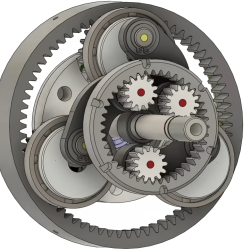When it comes to aviation curiosities, few machines captivate the imagination like the Fairey Rotodyne. This British hybrid aircraft was a daring attempt to combine helicopter and fixed-wing efficiency into a single vehicle. A bold experiment in aeronautical design, the Rotodyne promised vertical takeoffs and landings in cramped urban spaces while offering the speed and range of a regional airliner. First flown in 1957, it captured the world’s attention but ultimately failed to realize its potential. Despite featured before, new footage keeps fascinating us. If you have never heard about this jet, keep reading.
The Rotodyne’s innovative design centered around a massive, powered rotor that utilized a unique tip-jet system. Compressed air, mixed with fuel and ignited at the rotor tips, created lift without the need for a tail rotor. The result: a smoother transition between vertical and forward flight modes. Inside, it offered spacious seating for 50 passengers and even had clamshell doors for cargo. Yet its futuristic approach wasn’t without drawbacks—most notably, the thunderous noise produced by its rotor jets, earning complaints from both city planners and residents.
Despite these hurdles, the helicopter-plane crossover demonstrated its versatility, setting a world speed record and performing groundbreaking intercity flights. Airlines and militaries expressed interest, but escalating development costs and noise concerns grounded this ambitious project.
To this day, the Rotodyne remains a symbol of what could have been—a marvel of engineering ahead of its time. Interested in more retro-futuristic aircraft tales? Read our previous story on it, or watch the original footage below and share your thoughts.
Continue reading “Versatile, Yet Grounded: The Rotodyne Revisited”



















